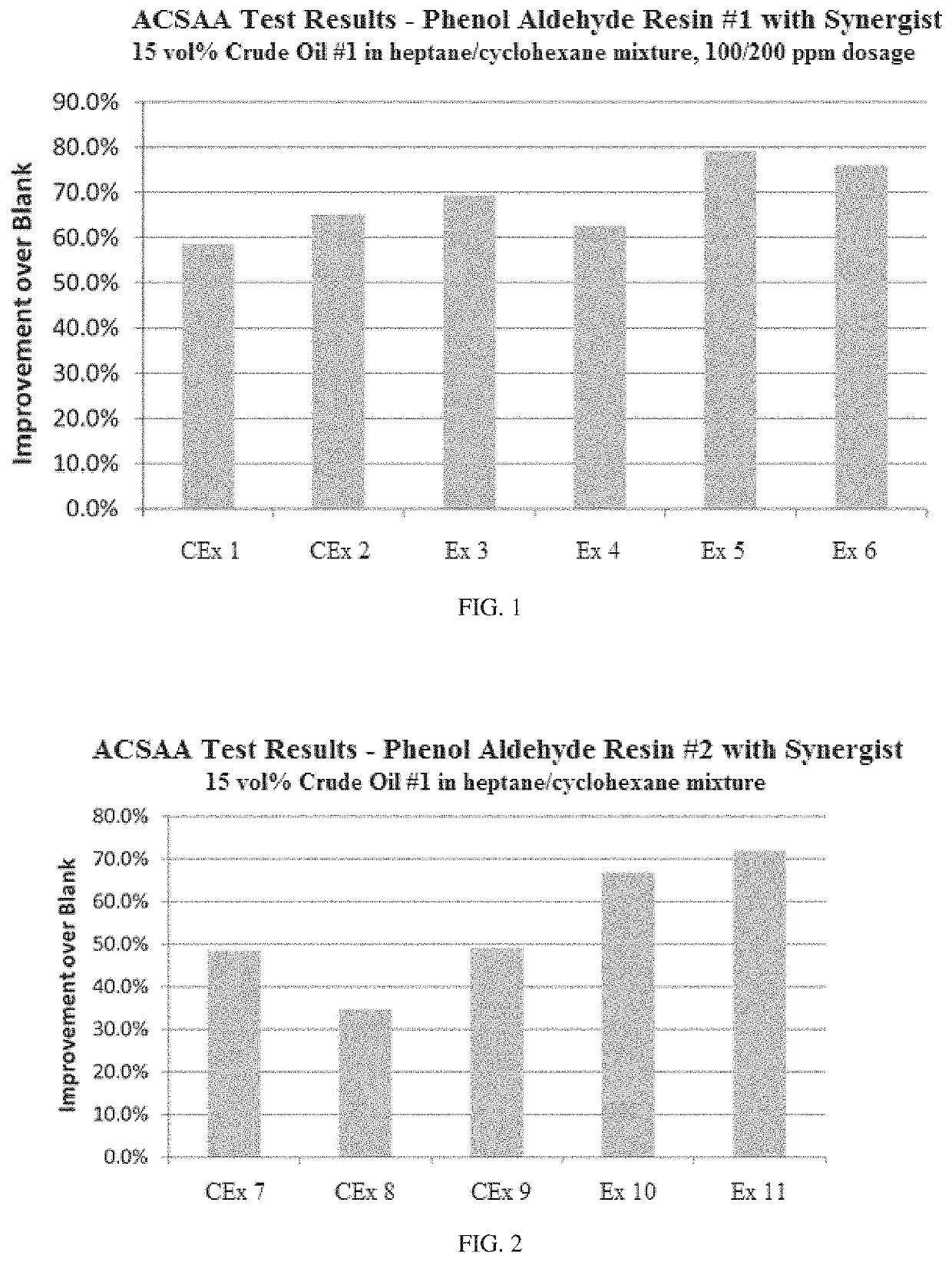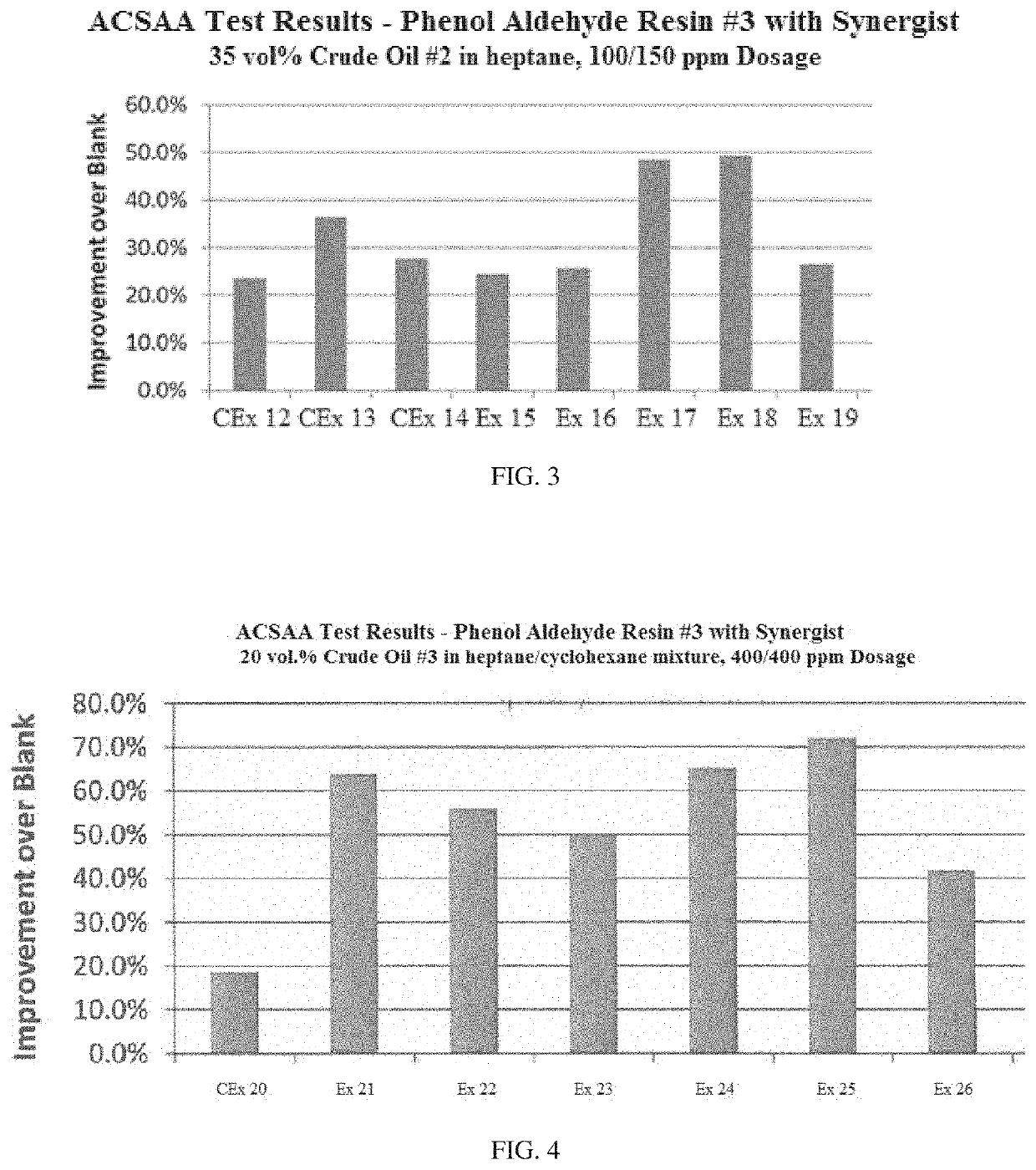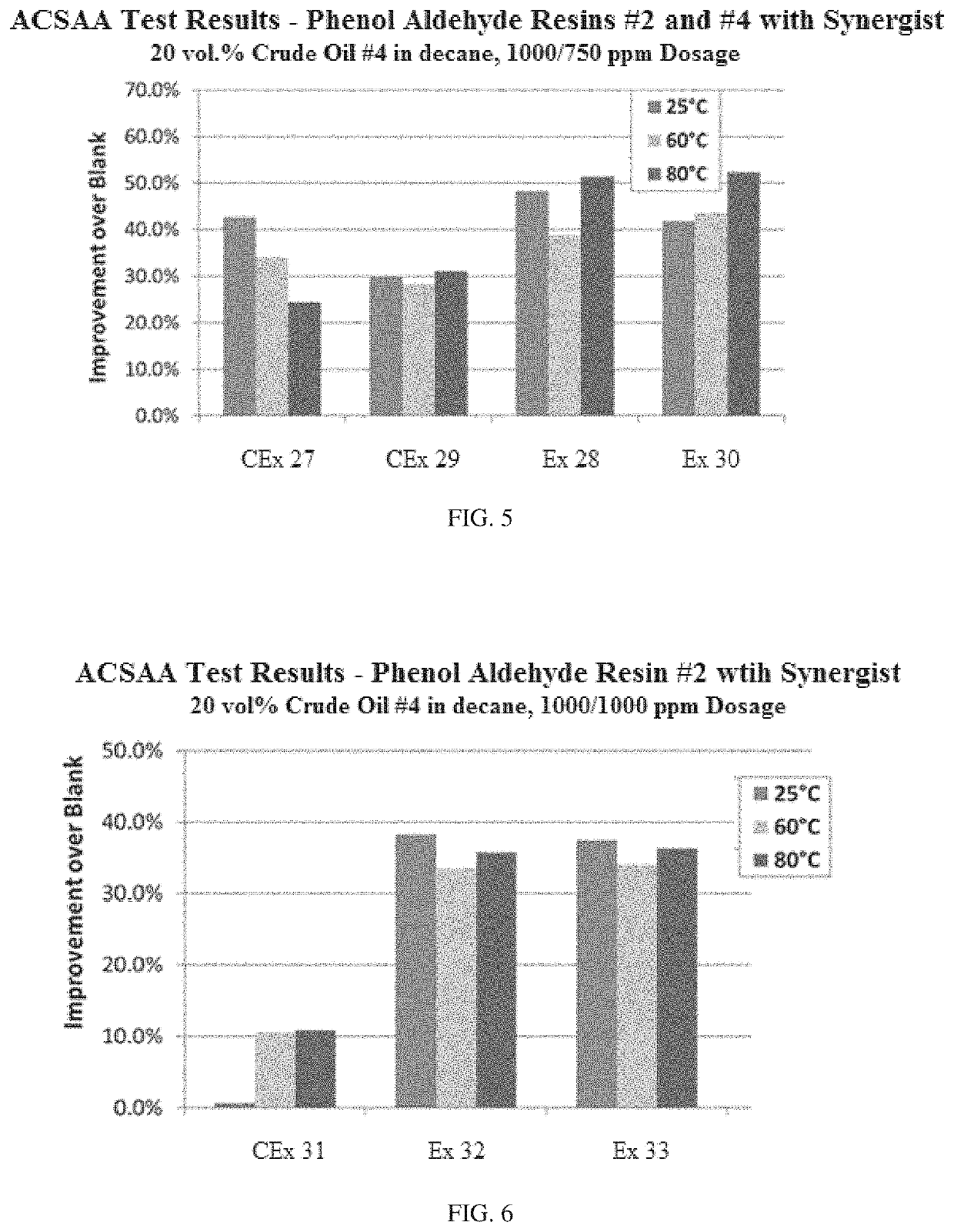Methods of using ionic liquid based asphaltene inhibitors
a technology of asphaltene inhibitor and ionic liquid, which is applied in the direction of liquid carbonaceous fuels, drilling compositions, chemistry apparatus and processes, etc., can solve the problems of asphaltene precipitation blocking production routes and tubing, affecting the viscoelasticity and flow behavior of petroleum crude, and further known to adversely affect the viscoelasticity of petroleum crude. , to achieve the effect of enhancing the performance of asphaltene inhibitor
- Summary
- Abstract
- Description
- Claims
- Application Information
AI Technical Summary
Benefits of technology
Problems solved by technology
Method used
Image
Examples
examples
[0087]The following examples are illustrative of some of the embodiments of the present invention. Other embodiments within the scope of the claims herein will be apparent to one skilled in the art from consideration of the description set forth herein. It is intended that the specification, together with the examples, be considered exemplary only, with the scope and spirit of the invention being indicated by the claims which follow.
[0088]One method to evaluate asphaltene inhibitors is through measurement of asphaltene stability using the method described in U.S. Pat. No. 9,360,425 also referred to as the Analytical Centrifuge Stability Analysis for Asphaltenes (ACSAA). ACSAA couples use of an analytical centrifuge with a destabilization solvent addition process to a petroleum hydrocarbon fluid that allows a quantitative determination of the relative instability of asphaltenes in the particular hydrocarbon fluid. As such, the influence of asphaltene inhibitors at decreasing the rela...
examples 1-6
[0092]Examples 1-6 show the effect of different ionic liquids as synergists in improving the performance of a phenol aldehyde resin #1 asphaltene inhibitor derived from a single substituted monophenol as disclosed herein on the improvement in instability index over untreated crude oil (blank) in ACSAA testing at 25° C. for Crude oil #1. Also shown is the result using an industry applied polyamine additive. Formulations and results are summarized in Table 1. The results are also illustrated graphically in FIG. 1.
[0093]
TABLE 1CExCExExExExExUnit123456ComponentPhenol aldehydeppm100100100100100100Resin #1Polyamineppm200Dicocodimethylppm200ammonium hydroxideDitallowdimethylppm200ammonium hydroxideTributylmethylam-ppm200monium methylcarbonateTetraethylammoniumppm200bicarbonatePerformanceImprovement over%58.565.169.462.779.276.0blank1. The phenol aldehyde Resin #1 added was a 40 wt. % solution.2. The ionic liquids and polyamine added were 5 wt. % solutions.
[0094]As seen in Table 1 and FIG. ...
examples 7-11
[0095]Examples 7-11 show the effect of two different ionic liquids (dicocodimethyl ammonium hydroxide and ditallowdimethyl ammonium hydroxide) as synergists in improving the performance of phenol aldehyde resin #2 asphaltene inhibitor derived from two alkyl-substituted monophenols as disclosed herein on the improvement in instability index over untreated crude oil (blank) in ACSAA testing at 25° C. for Crude oil #1. Also shown are results using industry applied polyamine and amine additives. Formulations and results are summarized in Table 2. The results are also illustrated graphically in FIG. 2.
[0096]
TABLE 2UnitCEx 7CEx 8CEx 9Ex 10Ex 11ComponentPhenol aldehydeppm100100100100100resin#2Amineppm200Polyamineppm200Dicocodimethylppm200ammonium hydroxideDitallowdimethylppm200ammonium hydroxidePerformanceImprovement over%48.434.649.066.871.9blank1. The phenol aldehyde resin #2 added was a 40 wt. % solution.2. The ionic liquids, amine, and polyamine added were 5 wt. % solutions.
[0097]The r...
PUM
| Property | Measurement | Unit |
|---|---|---|
| pressure | aaaaa | aaaaa |
| temperature | aaaaa | aaaaa |
| temperature | aaaaa | aaaaa |
Abstract
Description
Claims
Application Information
 Login to View More
Login to View More - R&D
- Intellectual Property
- Life Sciences
- Materials
- Tech Scout
- Unparalleled Data Quality
- Higher Quality Content
- 60% Fewer Hallucinations
Browse by: Latest US Patents, China's latest patents, Technical Efficacy Thesaurus, Application Domain, Technology Topic, Popular Technical Reports.
© 2025 PatSnap. All rights reserved.Legal|Privacy policy|Modern Slavery Act Transparency Statement|Sitemap|About US| Contact US: help@patsnap.com



